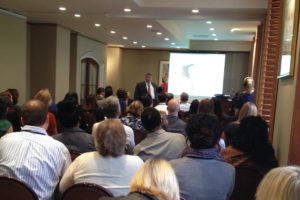Next week, we’re looking forward to connecting with alternative staffing organizations from around the country at the Alternative Staffing Alliance Annual Conference in Atlanta.
Alternative staffing organizations (ASOs) are social enterprises that combine a temporary staffing business model with supportive services to help job seekers with obstacles to employment enter and advance in the workplace. The conference offers a variety of sessions to help ASOs expand their businesses and create more work opportunities for people with disabilities and other barriers to employment.
A complete schedule of the conference, which runs from Oct. 1-3, is available on the Alternative Staffing Alliance (ASA) website. Some highlights we’re particularly looking forward to include:
Sales Ridealongs
Wednesday, Oct. 1; 8:30 a.m.-1:15 p.m.
Alternative staffing is a unique approach, and ASOs face a number of challenges not faced by either traditional staffing agencies or social service providers. Conference co-host First Step Staffing will take six lucky conference participants on sales calls throughout Atlanta to share ideas and approaches for alternative staffing sales.
Planning for Sustainable Growth
Thursday, Oct. 2; 10 a.m.-1 p.m.
Our own President & CEO Dave Shaffer will be a panelist for the plenary session. The first portion of the session will explore the complex world of markets and financing, and Dave will discuss our national expansion as PurposeSTAFF. The second portion will focus on finding, developing and retaining staff members who have both business acumen and embrace the social mission.
Use Public Policy to Leverage Business Development
Friday, Oct. 3; 9 a.m.-10:15 a.m.
You’re likely familiar with the Department of Labor’s Final Rule to Section 503, which took effect in March, and offers a great opportunity to ASOs that specialize in employing people with disabilities and veterans. Panelists from a variety of different organizations, including the Office of Federal Contract Compliance Programs, will review the regulations and discuss how federal contractors are implementing them.




